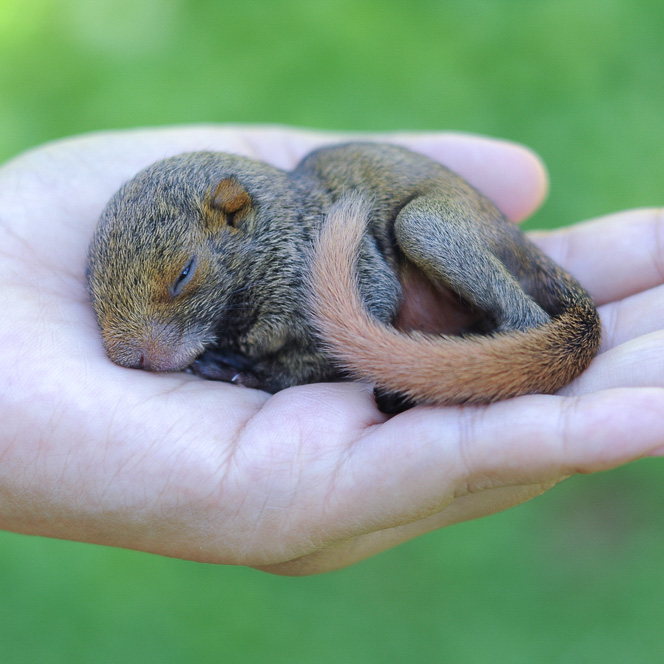
Baby Squirrel Care: A Comprehensive Guide
Introduction
Baby squirrels are undeniably adorable creatures, but their delicate nature requires specialized care to ensure their well-being. Whether you encounter an orphaned squirrel or are simply curious about their care, this comprehensive guide will provide you with the essential knowledge and practical tips to nurture these tiny mammals.
Identifying an Orphaned Squirrel
Determining if a baby squirrel is orphaned is crucial for its survival. Here are some signs to look for:
- No visible nest or mother: Baby squirrels typically stay in their nest with their mother for several weeks. If you find a squirrel outside of a nest and cannot locate its mother nearby, it may be orphaned.
- Cold and lethargic: Orphaned squirrels often become cold and inactive due to lack of warmth and nourishment.
- Visible injuries or wounds: Injuries or wounds can indicate that the squirrel has been separated from its mother or has fallen from a tree.
- Crying or distress calls: Baby squirrels may emit high-pitched cries or distress calls if they are lost or in need of attention.
Immediate Care for Orphaned Squirrels
If you find an orphaned baby squirrel, it is essential to provide immediate care to prevent further distress or harm:
- Warmth: Place the squirrel in a warm, dark, and quiet place. You can use a heating pad set to low or a warm water bottle wrapped in a towel.
- Hydration: If the squirrel is dehydrated, offer it a few drops of Pedialyte or electrolyte solution using a syringe or eyedropper.
- Nutrition: Baby squirrels require a specialized formula that mimics their mother’s milk. Do not feed them cow’s milk or other human foods.
Long-Term Care
Once the squirrel’s immediate needs have been met, you will need to provide long-term care until it is old enough to be released back into the wild.
Feeding
- Formula: Use a specialized squirrel formula available at pet stores or veterinary clinics.
- Feeding schedule: Feed the squirrel every 2-3 hours during the day and every 4-6 hours at night.
- Feeding method: Use a syringe or eyedropper to gently feed the squirrel. Do not overfeed.
Housing
- Nest: Provide a small, warm, and enclosed nest for the squirrel. Line it with soft materials such as fleece or cotton balls.
- Temperature: Keep the nest at a temperature between 85-95°F (29-35°C).
- Humidity: Maintain a humidity level of around 50-60% in the nest.
Stimulation
- Massage: Gently massage the squirrel’s abdomen and genitals to stimulate elimination.
- Exercise: Encourage the squirrel to move around by placing it on a soft surface and gently encouraging it to explore.
Hygiene
- Cleaning: Keep the nest and the squirrel clean by removing any soiled materials.
- Bathing: Bathe the squirrel once a week using a mild soap and warm water.
Socialization
- Handling: Handle the squirrel gently and only when necessary. Avoid excessive handling.
- Interaction: Talk to the squirrel and provide it with gentle strokes to help it socialize.
Release
- Age: Squirrels are typically ready to be released back into the wild at around 12-16 weeks of age.
- Preparation: Gradually introduce the squirrel to the outdoors by placing it in a sheltered area for short periods.
- Release site: Choose a release site that has plenty of trees, food sources, and water.
Common Health Issues
- Pneumonia: Baby squirrels are susceptible to pneumonia, which can be caused by cold temperatures or bacterial infections.
- Malnutrition: Improper feeding or dehydration can lead to malnutrition.
- Parasites: Squirrels can carry parasites such as fleas, ticks, and worms.
- Injuries: Baby squirrels may sustain injuries from falls or other accidents.
When to Seek Professional Help
If you encounter any of the following signs, seek professional help from a veterinarian or wildlife rehabilitator immediately:
- Difficulty breathing
- Lethargy or lack of appetite
- Diarrhea or vomiting
- Open wounds or injuries
- Unusual behavior
Conclusion
Caring for baby squirrels is a rewarding but challenging endeavor. By following the guidelines outlined in this comprehensive guide, you can provide these vulnerable creatures with the necessary care and support to ensure their survival and well-being. Remember to prioritize their warmth, nutrition, hygiene, and socialization to give them the best chance of thriving in the wild.
